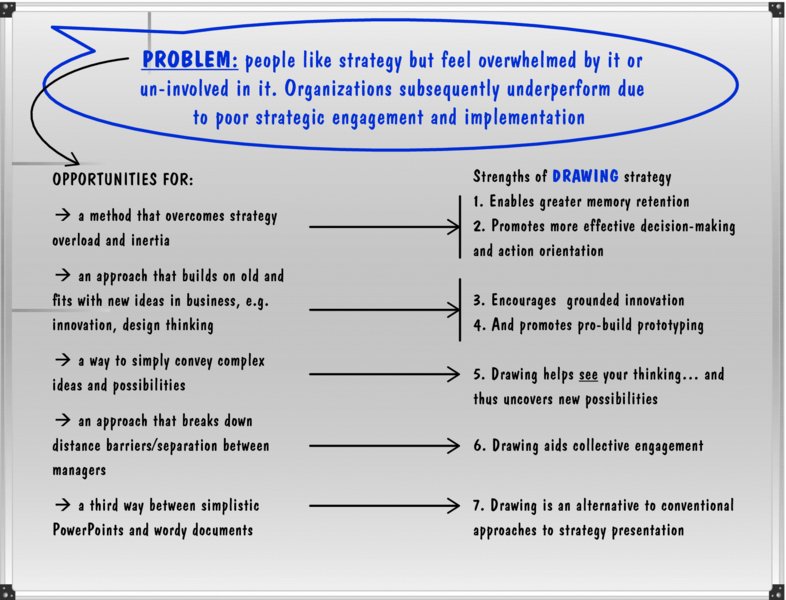SEVEN STRENGTHS OF DRAWING STRATEGY
Connecting all the opportunities outlined in the previous chapter is the simple fact that most people like to build things (and currently most feel that they're not engaged in building strategy). This facet of human nature goes a long way to explaining the appeal of some of today's most famous brands, from LEGO (building models), Facebook and LinkedIn (building personal profiles), to Minecraft and SimCity (building virtual worlds), and Pinterest (building hobbies) and Homebase – or its DIY (home-handyperson) equivalents around the world. And it's common sense that if you were going to build something important and reasonably complex, without the instruction manual or prompts such as those provided by these companies, you would work it out by drawing it first. However, while picturing a strategy may be starting to make sense in light of what we have discussed so far, there are other, more scientific, reasons why you should be drawing strategy in order to build it better. We outline seven strengths of drawing strategy: seven strengths which, as we illustrate on the whiteboard below, respond to the opportunities for a new approach to making and communicating strategy.

1. Drawing strategy aids memory retention (and more)
A strategy is only as good as its implementation. Therefore, good strategy development requires effective communication to ...
Get Strategy Builder: How to create and communicate more effective strategies now with the O’Reilly learning platform.
O’Reilly members experience books, live events, courses curated by job role, and more from O’Reilly and nearly 200 top publishers.

